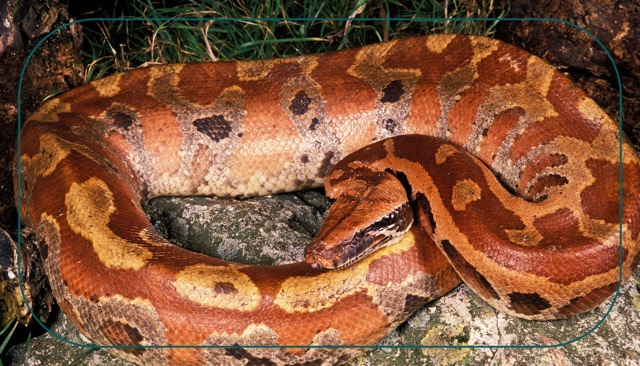Harvest quotas, free markets and the sustainable trade in blood pythons
A 2022 analysis of nearly a decade’s research revealed a troubling reality: the number of snake skins reported in legal trade records vastly underrepresents the actual number of snakes being killed. This gap points to a significant illegal wildlife trade problem, raising concerns about the enforcement of trade regulations and the sustainability of snake populations.
The global trade in wildlife has faced increased scrutiny in recent years. Many aspects of wildlife trade are governed by domestic laws and international agreements like the Convention on International Trade in Endangered Species of Wild Fauna and Flora (CITES). Yet, enforcement is patchy, and illegal activity often slips through the cracks.
Blood pythons are primarily harvested for their skins to produce luxury bags and shoes, though there is also a smaller but growing market for live blood pythons as pets.

Vincent Nijman, Professor of Anthropology at Oxford Brookes University, published a detailed analysis in Nature Conservation, uncovering the hidden scale of the blood python trade. By cross-referencing international trade records, data from snake slaughterhouses, and local harvest quotas, he found clear evidence of significant underreporting and likely illegal trading.
“By the time slaughterhouses hit their quotas for the year, the trade doesn’t stop, suggesting a worrying level of unregulated activity,” says Nijman.
One challenge in assessing the legality and sustainability of blood python harvesting is the reliance on slaughterhouse data, which provides a limited view.
Dr. Chris Shepherd, an expert on wildlife trade and Executive Director of the Monitor Conservation Research Society, highlights another issue: “Despite decades of commercial trade in blood pythons from Indonesia, during which hundreds of thousands of python skins were exported, there is hardly any data on the health of these snake populations in the wild – without which, it’s impossible to determine whether current harvesting levels are sustainable.”
Professor Nijman and other wildlife trade experts hope the study will prompt action along the supply chain. Importers should re-evaluate their sources to ensure all blood python products are legal and sustainable and range countries must strengthen enforcement and monitoring of wild populations.
Ensuring transparency and compliance across the trade network is essential to protect these unique reptiles and the ecosystems they inhabit. By addressing gaps in regulation and trade data, we can work toward a future where wildlife trade is both ethical and sustainable.
Check out the publication Harvest quotas, free markets and the sustainable trade in pythons in Nature Conservation.
Also read: Study casts doubt on sustainability of regulated blood python snakeskin trade on Mongabay
Share this article:

How you can help
Please consider making a donation to support this crucial work for wildlife.

